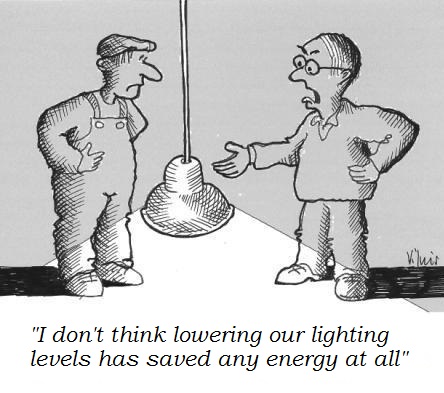By Vilnis Vesma
- If your light fittings are the type with translucent diffusers, fill them with dead flies.
- Avoid replacing tungsten-filament light bulbs with LEDs or compact fluorescent equivalents. Although it is now illegal to sell most general lighting service (GLS) filament lamps, one can still buy “rough service” equivalents which have the great advantage of being even less energy-efficient.
- Keep your external lighting on 24 hours a day. This encourages a culture of not caring about leaving things running when idle, and will help waste many times more energy than is used in the lights alone.
- Also keep your internal lights on continuously, not least because doing so will increase the demand for air conditioning.
- Provide excessive light levels in working areas and try to ensure that corridors and stairwells are even brighter (this removes one of the vital cues that prompt people to turn lights off when they leave empty rooms).
- Be careless when specifying automatic lighting controls. Choose the wrong sensor technology, so as to maximise nuisance switching. This has a dual benefit – it encourages people to override the control, and it also antagonises them so they won’t cooperate with other energy-saving initiatives.
- In shared workplaces, paint over any labels identifying which switch controls which zone.
- Choose automatic lighting controls with remote control handsets that cannot be understood without training. Then lose the instructions and the remotes.
This article first appeared in the Energy Management Register newsletter (www.vesma.com/notices)

